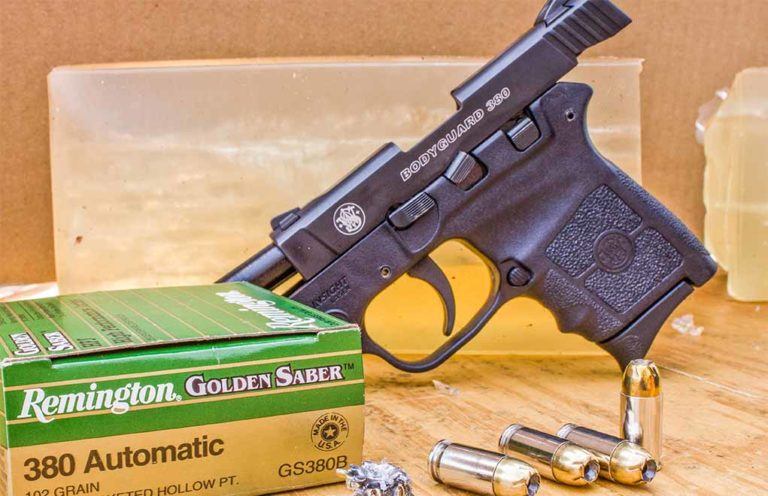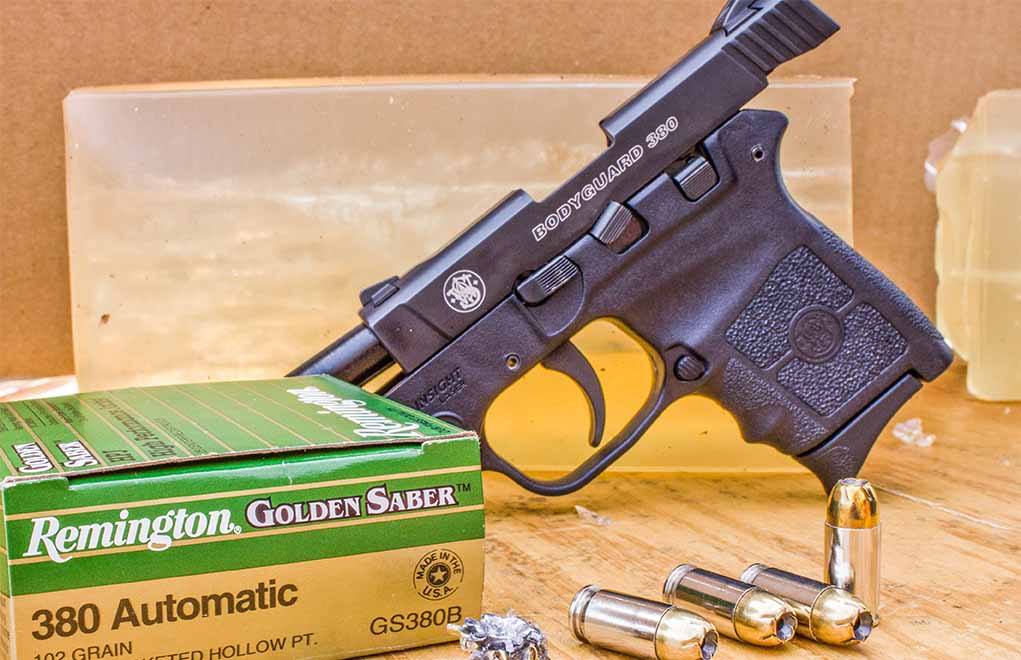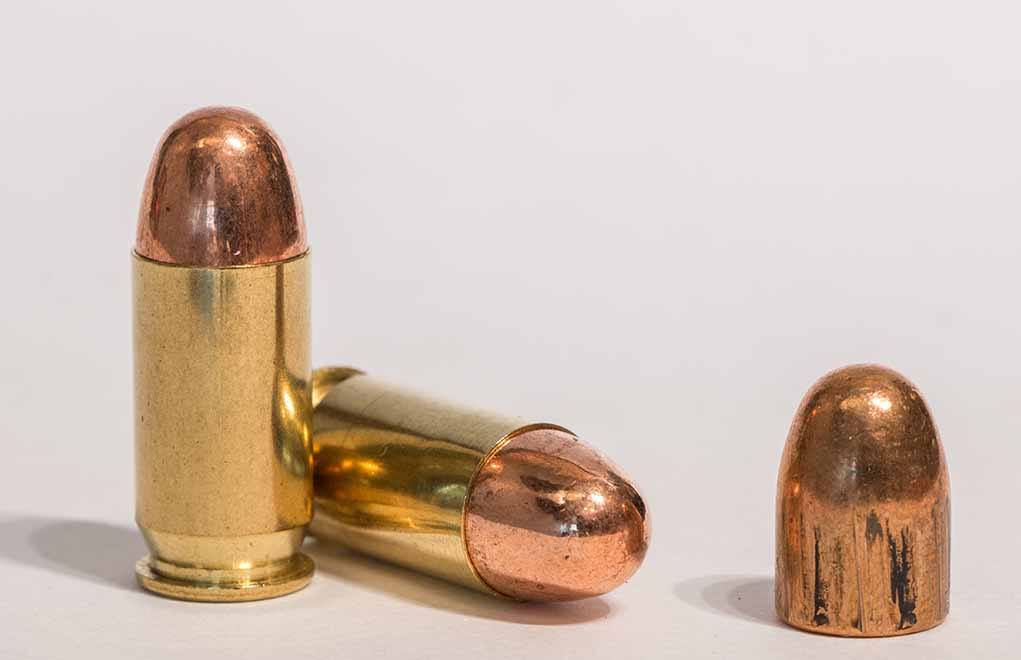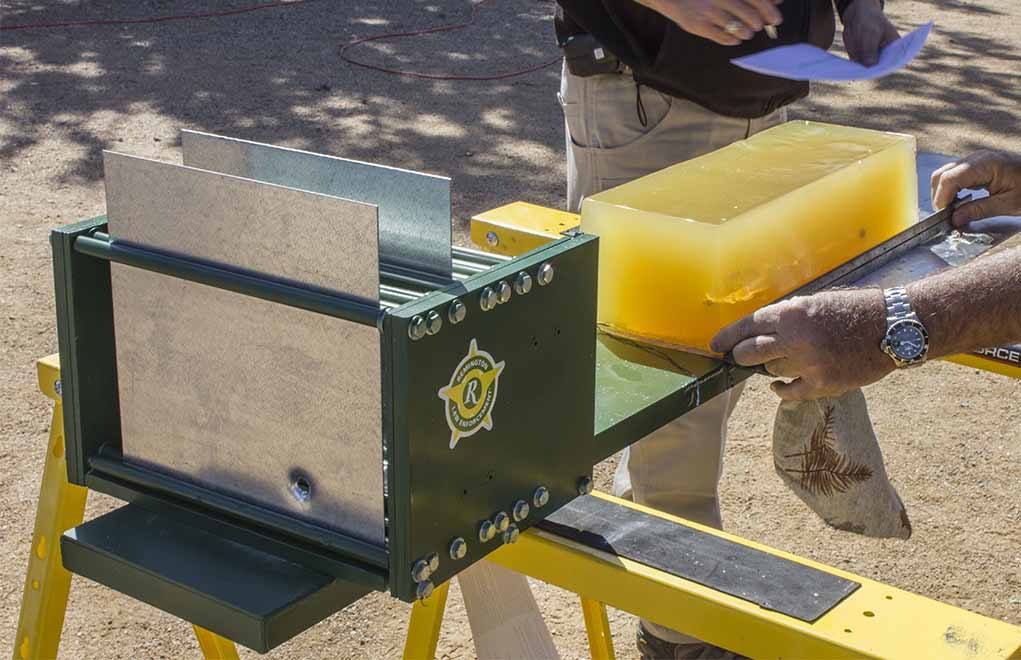

Penetration tests in ballistic gel, particularly in the FBI protocol, are good indicators of a defensive round's terminal potential. But they're not the final word.
What You Need To Know About Ballistic Gel:
- Developed by wound ballistics expert Martin L. Fackler to roughly mimic human muscle tissue.
- Ten-percent ballistic gel is mixed — by weight — at a 9:1 ratio with water.
- It is melted, making certain heat does not exceed 40-degrees Celsius, then chilled to 4-degrees Celsius.
- The block is calibrated by firing a .177 steel BB, requiring 8.3 to 9.5 cm of penetration at a velocity of 183 ± 3 m/s.
It all started in April 1986 with a silver bullet. Well, not a bullet made from silver, but with a Winchester Silvertip. The bullet stopped an inch from a bad guy’s heart, and then the bad guy proceeded to wreak havoc on a triad of FBI agents. That 9mm Silvertip bullet penetrated the bicep muscle of the arm, exited, entered the chest and drove into the lower lobe of the lung. It expanded as designed, and the medical examiner described it as “markedly deformed.”
Actually, this was reasonably good terminal performance, especially given that handgun bullets generally don’t do very well with tissue transition after expansion. Nonetheless, in 1987, the FBI sponsored a Wound Ballistics Workshop, made up of ballisticians, medical examiners and policemen.
As a result, the FBI pulled the 115-grain Silvertip from the field, ignoring the fact that it had an excellent record on the street. The FBI’s thinking was that it needed a bullet that would penetrate 16 to 18 inches. Of course, the problem with this notion is that for a defensive handgun bullet from common duty cartridges to penetrate that deeply, it cannot expand very wide.

When it comes to terminal performance, one axiom always applies: If a bullet expands wide, it cannot penetrate deeply … and if a bullet penetrates deeply, it cannot expand or deform with a wide frontal diameter. Smart folks call this logic “physics.”
The result of the application of all the FBI’s wisdom was the creation of a “defensive/duty handgun ammunition test protocol” that involved shooting through a variety of barriers, including heavy clothing, steel, wallboard, plywood and automotive glass. After passing through these barriers, the bullet would be caught in 10 percent ballistic gel. Then, the bullet would be extracted, and its total penetration and expanded frontal diameter measured.
Smashing Other Ballistic Myths:
- .45 ACP vs 9mm: Which Is Better?
- What You Need To Know About Handgun Stopping Power
- Bullet Expansion: Velocity Is The Deciding Factor
- Is Sectional Density A Good Measure Of A Bullet’s Penetration Potential?
- The Truth About Barrel Length And Velocity
The first result of this testing was the creation of the .40 S&W cartridge, which is essentially a 10mm light. Law enforcement agencies from coast to coast soon adopted handguns in this chambering, and civilians, as they always do, followed suit. This “protocol,” if you will, caught on, too, because it seemed very pragmatic. For the past 20 years, police and those interested in protecting themselves with a defensive handgun have come to believe two things:

The first is that if a bullet/load does not do well in FBI testing, it’s not suitable for personal protection. The second is that no one seems to take any terminal performance testing for real unless it has been conducted in 10 percent ordnance gelatin (more commonly known as ballistic gel), which has been prepared to FBI specifications and then used as the FBI specifies. Both assumptions are patently incorrect.
For starters, the ability of a bullet to “stop” a bad guy does not hinge on the score it receives while being subjected to FBI testing. Shot placement, the mental state of the bad guy, and his or her conscious and subconscious response to getting shot has a lot more to do with instantaneous or fast incapacitation (or the reversal of bad behavior) than any number score derived from shooting big blocks of a Jell-O-like substance.
And finally, the only folks who adhere to the FBI testing protocol are … members of the FBI. Bullet manufacturers subject their bullets and ammo to a wide range of tests in a wide range of mediums. Some use 10 percent ballistic gel, some use 20 percent gel. Heck, some use a glue-like substance, and some use wax. And others simply use water. There’s nothing magical about 10 percent ballistic gel — or the FBI tests.

Am I saying the FBI testing protocol and 10 percent ballistic gel are gimmicks? No. Am I saying that the data obtained with this testing is no good or only useful to the FBI? No. What I am saying is that results obtained in 10 percent ballistic gel and the FBI’s protocol are only indicators, not the final word. It’s not gospel; it’s simply the findings of a government agency.
Editor's Note: This article originally appeared in the May 2019 issue of Gun Digest the Magazine.

Next Step: Get your FREE Printable Target Pack
Enhance your shooting precision with our 62 MOA Targets, perfect for rifles and handguns. Crafted in collaboration with Storm Tactical for accuracy and versatility.
Subscribe to the Gun Digest email newsletter and get your downloadable target pack sent straight to your inbox. Stay updated with the latest firearms info in the industry.

![Best Concealed Carry Guns In 2025 [Field Tested] Wilson Combat EDC X9S 1](https://gundigest.com/wp-content/uploads/Wilson-Combat-EDC-X9S-1-324x160.jpg)


![Best 9mm Carbine: Affordable PCCs [Tested] Ruger Carbine Shooting](https://gundigest.com/wp-content/uploads/Ruger-Carbine-Shooting-100x70.jpg)
![Best AR-15: Top Options Available Today [Field Tested] Harrington and Richardson PSA XM177E2 feature](https://gundigest.com/wp-content/uploads/Harrington-and-Richardson-PSA-XM177E2-feature-100x70.jpg)
